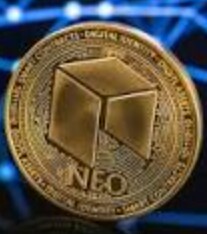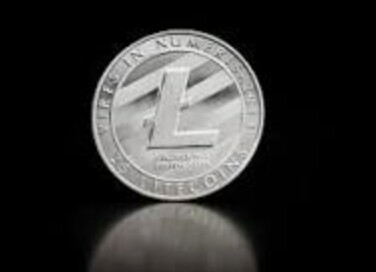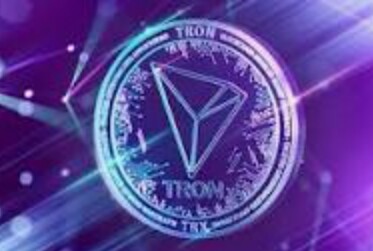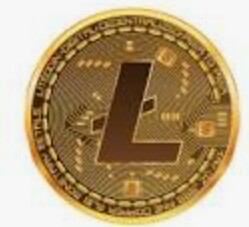
Kakashi2020
Members-
Posts
479 -
Joined
-
Last visited
-
Days Won
15
Kakashi2020 last won the day on November 15 2021
Kakashi2020 had the most liked content!
Recent Profile Visitors
1,349 profile views
Kakashi2020's Achievements
Newbie (1/14)
35
Reputation
-
Chainlink (LINK) The Ethereum platform is predicated on smart contracts, or agreements between two parties on a blockchain network with the transaction recorded in blocks of data. The problem is that these transactions can only occur on a platform like Ethereum, and they need some way to draw real-world data into the platform in order to execute smart contracts when certain conditions are met. The solution is data providers called oracles, and while several crypto platforms have created ways for oracles to retrieve data for their network, Chainlink has come up with a reputation system that guarantees the data is accurate, ensuring the validity of smart contracts. Once an oracle's data is verified, they are paid with Link, Chainlink's cryptocurrency of choice. This system builds confidence in the platform, and the growing popularity of decentralized finance, or DeFi, helps make Link a contender for the best cryptocurrency. Pros The Chainlink project provides compatibility between Bitcoin, Ethereum, and also allows banks and payment services to be included in the system. One of Chainlink's goals is to decentralize smart contracts. This should greatly increase the security of information as well as its accuracy. The SmartContract company, which formed the backbone of Chainlink developers, has been engaged in contract automation since 2014. Cooperation with the largest companies — Google Cloud, Oracle and SWIFT inspires confidence. LINK tokens can be a good investment tool given the technological capabilities and goals of the Chainlink project. Cons There are too few guarantees for investors that the partnership will be long and fruitful. Low development speed. It is not known how long it will take for Chainlink to implement a real working solution affecting the execution of financial transactions. Moreover, there is no officially released roadmap that could be guided by.
-
Binance Coin (BNB) Like Ethereum, Binance Coin is much more than a cryptocurrency – as a matter of fact, Binance Coin was originally hosted on Ethereum until the Binance decentralized exchange, or DEX, went online in 2017. The Binance DEX is a platform much like Ethereum, albeit with a different mission. The Binance DEX is a decentralized platform where users can not only buy and sell binance coins but also use BNB to convert other cryptocurrencies from one to another. This has made the Binance DEX the biggest cryptocurrency exchange on the planet by volume and has helped fuel the popularity of the digital asset. Most importantly, the Binance DEX offers a discount to users who pay transaction fees on the exchange with BNB – a smart strategy that keeps users on the platform and helps sustain Binance Coin's growth. Pros: Fast – Binance US uses the same technology as Binance, which processes 1.4 million orders per second. Low fees – Binance US charges 0.1% transaction fees, less if you pay in BNB. Liquidity – Since trading started on the platform, Binance US has offered a high liquidity to its customers. Great customer service -- Binance US offers even better customer service than the original. It’s based in the US, after all, where “the customer is always right.” Great reputation. Binance is well-known to pay attention to user security and to be continually innovating. Cons: Currently, Binance US does not offer services in New York due to missing regulatory requirements which NY requires. 12 more states are also affected: Alaska, Alabama, Connecticut, Georgia, Florida, Hawaii, Louisiana, North Carolina, Idaho, Vermont, Washington, Texas. But Binance US is working on getting people from these 13 states ready to trade. Limited choice of cryptocurrency for trading. Although they are exploring 23 additional coins, Binance US currently offers 7 coins only. This is a far cry from the hundreds which Binance itself offers.
-
Monero (XMR) Monero is a secure, private and untraceable currency. This open-source cryptocurrency was launched in April 2014 and soon spiked great interest among the cryptography community and enthusiasts. The development of this cryptocurrency is completely donation-based and community-driven. Monero has been launched with a strong focus on decentralization and scalability, and it enables complete privacy by using a special technique called “ring signatures.” With this technique, there appears a group of cryptographic signatures including at least one real participant, but since they all appear valid, the real one cannot be isolated. Because of exceptional security mechanisms like this, Monero has developed something of an unsavory reputation: it has been linked to criminal operations around the world. Nonetheless, whether it is used for good or ill, there’s no denying that Monero has introduced important technological advances to the cryptocurrency space. As of Jan. 8, 2020, Monero had a market cap of $994.0 million and a per-token value of $57.16. Pros One of the most privacy-oriented cryptocurrencies Very scalable Transactions cannot be linked back to you Respected in the crypto world Cons A bit difficult to deal with (storage, etc.) Many wallets do not support Monero
-
One of the most-hyped cryptocurrencies is one that, as of January 2020, has yet to even launch. By mid-2018, rumors circulated that social media giant Facebook, Inc. (FB) was developing its own cryptocurrency. Given Facebook's incredible global reach and the potential for massive volumes of exchange across its platform, the cryptocurrency world had long speculated that the social media titan might launch its own digital token. Rumors were formally confirmed on June 18, 2019, when Facebook released the white paper for Libra. The tentative launch date for the token is later in 2020, as Facebook has committed to sorting through regulatory barriers before launch. Libra will be overseen in part by a new Facebook subsidiary, the financial services outfit Calibra. When Libra does launch, it is sure to garner massive amounts of attention from those within (and outside of) the cryptocurrency sphere.
-
Tether (USDT) Tether was one of the first and most popular of a group of so-called stablecoins, cryptocurrencies which aim to peg their market value to a currency or other external reference point so as to reduce volatility. Because most digital currencies, even major ones like bitcoin, have experienced frequent periods of dramatic volatility, Tether and other stablecoins attempt to smooth out price fluctuations in order to attract users who may otherwise be cautious. Launched in 2014, Tether describes itself as "a blockchain-enabled platform designed to facilitate the use of fiat currencies in a digital manner." Effectively, this cryptocurrency allows individuals to utilize a blockchain network and related technologies to transact in traditional currencies while minimizing the volatility and complexity often associated with digital currencies. On Jan. 8, 2020, Tether was the fourth-largest cryptocurrency by market cap, with a total market cap of $4.6 billion and a per-token value of $1.00 Pros & Cons of USDT Pros Stable/fixed value of one USD for each USDT No value fluctuations Available on most major exchanges Cons Controversy surrounding backing of each token Value will never be greater than one USD per token No guarantee that USDT can be exchanged for equivalent USD Tether Overview Initially Tether claimed that each token was backed by a an actual USD at a 1:1 ratio, but it has since been revealed to much controversy that it is not only USD, but also loans to affiliate companies, combined with USD and other traditional currencies such as the Japanese yen and the Euro, which make up the company’s asset reserves. The company who released Tether, Tether Limited, states that customers have no legal claim, right, or guarantee that their USDT can be exchanged for USD. Tether has since been released on other blockchain platforms, in a bid to create a stable coin that is interoperable with all major blockchains. Two of those platforms are EOS and Tron, two very large and popular blockchain platforms for a range of activities and applications.
-
NEO, a Chinese cryptocurrency, was created in 2014 by Da Hongfei. Did you know that it was originally called AntShares? In fact, it only got rebranded to NEO in June 2017! NEO is often referred to as the “Chinese Ethereum” because of the similarities to its competitor among the top 10 cryptocurrencies Ethereum. It also offers a blockchain-based platform for the development of Smart contracts and launching ICOs. Pros of NEO NEO can complete 10,000 transactions per second compared to the 15 transactions of Ethereum. While Ethereum supports only one programming language, NEO supports multiple languages like C++, C#, Go, Java, making it a favorite among programmers. It appears to enjoy the support of the Chinese government, which gives it a clear advantage in the massive Chinese and Asian markets. Cons of NEO Since it is dependent on government support, it will be the worst hit if the Chinese government comes out with unfavorable policies. It is targeting the most competitive segment in which there is severe competition from other cryptocurrencies in the top 10 — Ethereum, Cardano, EOS. Historical performance NEO deserved to be in the top cryptocurrency list because of the tremendous return it gave in 2017. NEO touched a high of about $162 in January 2018, a 111,400% growth from $0.16 in January 2017. Same as IOTA, NEO is currently experiencing a period of stabilization. It's priced at $7,74 USD with a market capitalization of $5.53 billion.
-
Founded in 2015, IOTA is the most unique coin among other similar crypto's. It is the only one to use a new protocol invention called ‘Tangle’ rather than blockchain technology. You have probably heard of the Internet-of-Things (IoT), a technology that enables communication between various objects with sensors, via the internet. IOTA is focussed on making this technology more secure, seamless and scalable. Pros of IOTA The biggest advantage that IOTA offers over all other cryptocurrencies is zero transaction fees. When all other cryptocurrencies are struggling with scalability issues, IOTA’s technology promises infinite scalability. Cons of IOTA IOTA is betting on the success of another industry — Internet-of-Things, making it's future even more unpredictable than the other top 10 cryptocurrencies. MIT Media Lab had recently discovered a security problem with Tangle. If the big IoT players themselves develop their own cryptocurrency then IOTA could face stiff competition Historical performance While IOTA was created in 2015, its token was launched on exchanges only in 2017. It was an immediate success as its price grew from $0.44 in June 2017 to $5.34 in December 2017, giving it a return of about 1,200%. Like most of the other crypto's, IOTA also experienced a price dip earlier this year. It is currently experiencing a stabilization - time will tell if IOTA will manage to climb back up.
-
Stellar XLM was founded in 2014 by Jed McCaleb who is also the founder of Ripple. In fact, Ripple was hard forked into Stellar and the Stellar Development Foundation was born. Like Ripple, Stellar is also focused on making cross-border payments more efficient. One thing that stands out for Stellar as compared to all the other popular cryptocurrencies is that the Stellar Development Foundation is a non-profit organization. As you can see in the picture below, its mission is also in line with that. Pros of Stellar Stellar is more decentralized as compared to its closest competitor, Ripple. Also, being a non-profit, it inspires more trust than others. Stellar has secured strategic partnerships with over 30 banks and with organizations like Deloitte and IBM. Cons of Stellar There are many coins that are targeting this space of international payments, including the number 3 on our list of Top 10 cryptocurrencies — Ripple. Historical performance Stellar has been around since 2014 but it did not see much traction ‘til the end of Q1 2017. Its price grew from $0.0039 in April 2017 to $0.85 in January 2018. That’s a return of 21,694% in less than 9 months! Stellar’s plans to bring financial inclusion to remote areas and revolutionize the payment industry has made it one of the most popular cryptocurrencies available.
-
Litecoin LTC was created way back in 2011 by Charlie Lee, an ex-Google employee. It was built on the blockchain of Bitcoin itself, with the purpose of improving it. So, like Bitcoin, Litecoin is also just a digital currency and does not provide a platform for smart contracts. Litecoin has one of the most popular cryptocurrencies as it has stood the test of time and has been around for over 7 years. Pros of Litecoin Litecoin transactions take around 2.5 minutes while it takes 10 minutes to complete a Bitcoin transaction. This is the reason that it is called the “Lite” coin. Average Litecoin transaction fees are around $0.179 against $1.8 of Bitcoin. Cons of Litecoin Except for transaction speed, there is no other offering from Litecoin which can significantly differentiate it from others. It is facing stiff competition from coins that offer privacy, smart contracts, and international payments, etc. Like Bitcoin mining, Litecoin mining is also expensive and restricted to those with specialized powerful hardware. Historical performance Litecoin has been one of the top 10 cryptocurrencies for a long time with a market capitalization of $9.64 billion. Litecoin had a great 2017 as its price grew from $4 in January 2017 to $350 in December 2017, giving it a return of over 8000%. Prices of Litecoin dipped as the cryptocurrency market crashed in March 2018. Its price has been moving downwards ever since.
-
Cardano was created by Charles Hoskinson, Ethereum’s co-founder, in September 2017. Like Ethereum, Cardano has also been developed as a platform for decentralized apps and smart contracts. Like EOS, the difference between Cardano and Ethereum lies in the many technological improvements it has made over Ethereum’s technology. Cardano is being considered as the 3rd and most advanced generation of blockchain technology yet (just as EOS and NEO are), making it one of the top 10 cryptocurrencies of 2021. Pros of Cardano Cardano is supported by an academic community of global researchers and scientists contributing to its blockchain development. Cardano is much more scalable than Ethereum with a current capability of 257 transactions per second. Cardano intends to bring about Interoperability meaning that it can interact with different cryptocurrencies and their infrastructures in a seamless manner. Cons of Cardano A lot of ideas that have been proposed by Cardano are yet to be developed into the final product. So, it remains to be seen whether they will be successfully achieved or not. There is already huge competition in this space, from Ethereum to EOS and NEO to Fusion. Historical performance In spite of being a very new cryptocurrency, Cardano has shown exceptional growth and reached a market capitalization of $9.35 billion. Cardano grew from about $0.20 in October 2017 to touch a price of $1.20 in January 2018, giving a return of about 500% in 3 months. Like other top 10 cryptocurrencies, Cardano’s price crashed in March 2018 but it is now showing signs of revival.
-
EOS token was launched through an ICO in June 2017. EOS’s platform, which was expected to launch in June 2018, is due to be a direct competitor to Ethereum and NEO. EOS has been created by Dan Larimer who is also the founder of the cryptocurrency exchange Bitshares and blockchain-based blogging site Steemit. EOS is building a platform for developers to build decentralized applications and smart contracts, but with a vast improvement in technology. Pros of EOS EOS is supposed to be much more scalable than Ethereum because it uses an advanced mechanism (Delegated Proof-of-Stake + Byzantine Fault Tolerance) to verify transactions. It is allegedly capable of achieving 10,000-100,000 transactions per second. Unlike some of the other top cryptocurrencies, EOS supports multiple languages, including C++. EOS has a highly experienced team with a proven track record. Cons of EOS The biggest issue is that the platform has still not been launched so no one knows for sure how good or bad it actually will be. Historical performance Launched in July 2017, EOS raised $700 million in its ICO over by the time January 2018 came by. It has raised even more since then. All things considered, EOS is undoubtedly one of the top cryptocurrencies for 2021.
-
As the name suggests, Bitcoin Cash has been forked from Bitcoin itself in 2016. When the developer community of Bitcoin could not come to an agreement regarding the changes required in Bitcoin’s code, it was forked into BCH and it currently ranks in the middle among the top 10 cryptocurrencies. Note: A fork is when a cryptocurrency is split into two. Parent cryptocurrencies retain their features while the child cryptocurrency undergoes technological improvements. The purpose of creating BCH was to solve some of the existing problems of Bitcoin, especially regarding scalability and transaction fees. Pros of Bitcoin Cash Bitcoin Cash transactions are faster than Bitcoin transactions because of the increase in block size to 8MB as compared to the 1MB of Bitcoin. Average Bitcoin transaction fees are currently around $1.8 which has gone down to $0.067 in the case of Bitcoin Cash. Cons of Bitcoin Cash Bitcoin Cash, like Bitcoin, is expected to be completely decentralized. BCH mining is as expensive as Bitcoin mining but gives lesser returns, so it is not a favorite among the miners. Bitcoin Cash is not as easily available on cryptocurrency exchanges as the other top 10 cryptocurrencies. Historical performance Launched just in 2016, Bitcoin Cash has grown very quickly to make it to the top cryptocurrency list. It grew from about $500 in July 2017 to about $4,000 in December 2017, giving a return of around 10,000% in less than 6 months. The price of Bitcoin Cash has also been experiencing a steady downfall since ay 2018. With a few signs of life, the future of BCH is still quite uncertain. In the last quarter of 2020 Bitcoin Cash recovered a bit and is expected to go steadily upwards.
-
Originally launched on the Ethereum network, TRON peer-to-peer network was aiming to revolutionise the entertainment industry and democratise content creation. The team has numerous high-profile partnerships, including Samsung, bike-sharing company oBike, Chinese search engine Baidu, and Baofeng, the so-called Chinese Netflix. TRON ecosystem works as a content-sharing platform. Users, who create or share content get rewarded with TRX, which serves as a more transparent monetisation system than those used by traditional social media networks. It also does not require a middleman, such as AppStore or GooglePlay. The rise of dApps could contribute greatly to TRON’s upward movement, as the crypto platform is considered one of the biggest powers in this market. In 2020, Tron’s dApp transaction volume even surpassed that of Ethereum. In summer 2020 the platform kicked off the TRON 4.0 Great Voyage protocol upgrade. The implementation of 4.0, introducing privacy features to smart-contracts, provide additional reason to be bullish on the TRX cryptocurrency forecast in 2021.
-
The launch of the first decentralised Litecoin-based RPG fantasy game LiteBringer, where each players’ move is a transaction, brought benefit for the whole blockchain. Litecoin transactions skyrocketed on the news, exceeding 130,000 right after the game’s launch. The boosted performance could serve as a positive price driver with the analysts from CoinSwitch predicting a $600 price target for Litecoin in 2021. Some analysts also believe that the Litecoin price will tend to grow in the coming years following the halving. According to the optimistic LTC cryptocurrency forecast by Cryptoground.com, Litecoin will trade at $88 in a one-year period and will climb up to $347 by the end of 2024.
-
Ripple was created as an alternative financial payments system with the aim to transform and facilitate cross-border payments, making them 100 per cent safe, almost free and instant. Back in early Ripple days in 2013, the platform got attention from many financial institutions. Years later it was adopted by more than 100 financial institutions. In 2020 The Ripple blockchain has expanded to more than 300 providers across 40 countries, including Banco Santander (SAN) and American Express (AXP), JP Morgan (JPM) and HSBC Holdings (HSBA). Among the most recent RippleNet’s supporters are the HDFC Bank Limited (HDB), India’s largest bank, and the Bank of America (BAC), the US second-largest bank. Looking forward into 2021, what are the major drivers that can make you think of Ripple as one of the top 10 cryptocurrencies to invest in? According to the report by OMFIF (the Official Monetary and Financial Institutions Forum), Ripple, with its distributed ledger technology (DLT), could “position itself as an alternative to SWIFT”, solving five major issues: security, speed, traceability, cost, transparency and risk management. With growing support from the European Commission, encouraging the transition to digital finance and sharing plans to build a new legal framework enabling the use of DLT technology and crypto assets in the financial sector, Ripple’s perspectives seem brighter than ever before
















